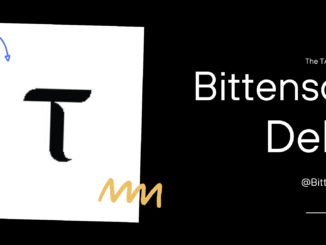
Full article written by: Max
the premise
The next wave of market data is not a spreadsheet; it is a video feed. Treat cameras as sensors, not scenery, and the world resolves into a high-frequency time series you can measure, model, and settle on replay. That unlocks instruments prediction markets can list at internet scale with credibility that comes from evidence, not opinion.
video is just time series we forgot to compress
Every camera ticks at 25–60 frames per second. Each frame can be reduced to a tidy row: counts, speeds, occupancies, interaction tags, a compact embedding, plus an uncertainty score. Stack the rows and you have tickers that behave like any other series, only they describe reality rather than just prices. The question stops being “what can we see?” and becomes “what can we quote?”
from frames to bars
The pipeline stays consistent: encode, model, execute, resolve. Encoding stabilises the feed and tracks what matters so each frame becomes a trustworthy row. Modelling focuses on short horizons, the next minute in a stadium, the next hour at a terminal, the next morning on a corridor with continuous recalibration so probabilities behave. Execution respects latency budgets and avoids churn; deepen when the picture is clear, step back when it is not. Resolution is anti-drama: pre-commit model versions and frame hashes; when the window closes, publish the clip and the decision. A dispute becomes a replay, not an argument.
camera-native instruments
Once video lives as a series, new products fall out naturally. Event intensity can be priced directly and settled on the tape. Waiting time becomes a security for chargers, lifts, lanes or check-ins, with pay-offs tied to median time-to-serve inside a defined window. Capacity turns into caps and floors on occupancy rather than a hand-wavy notion. Even “volatility” becomes scene-level economics: bursts and lulls in motion have a cost you can swap with a counterparty that prefers calm. Rules-based behaviours, safety steps, cleanliness, process completion, become compliance credits where the proof is the footage.
alpha that only streams unlock
Treating video as a stream exposes dynamics static reports cannot. Local lead–lag appears in space: neighbouring feeds rarely move in sync and one consistently leads by seconds, making the spread tradable without guesswork. Path signals emerge where upstream scenes predict downstream scenes with a stable delay along roads, conveyors or crowd flows. Separating bursts from drift improves sizing and inventory because jumps have different economics to gentle trends. Cross-modal veto power arrives too: video confirms or cancels signals from text and price in real time, pruning false positives before they become expensive.
why now
Vision–language encoders have crossed a threshold. Better models miss less, faster models react within strict latency budgets, and cheaper fine-tuning lets you adapt without retraining the world. Lower measurement cost means you can watch more places more often, producing steadier calibration and broader coverage. The effect compounds as the network of camera-native tickers grows: small, honest edges add up without making the system brittle. Returns nudge up, drawdowns ease, and diversification improves because each feed is a slightly different instrument rather than a copy of the same signal.
not the usual suspects
If stadiums and container yards feel over-familiar, look elsewhere. A roof camera over electric-vehicle bays turns availability into a tradable schedule so fleets can hedge missed charges and drivers can buy certainty on a grim evening. Chairlift views at resorts translate into dwell and throughput series that make queue notes and snowfall verification boringly mechanical. Construction time-lapse becomes a ledger for milestones, crane idle time and progress by section, so developers hedge penalties and suppliers hedge delivery risk. Rooftop masts watching urban air corridors turn drone congestion into an index with auctionable clear slots and video receipts. Lock-side feeds convert cycle counts and dwell into throughput that actually moves barge schedules. Airports and arenas, security lines and egress waves, are already camera-rich; they just have not been priced.
build it like a system, not a demo
Standardise the state vector so new feeds plug in without bespoke work. Instrument reliability alongside revenue and latency, calibration is a first-class metric, not a research curiosity. Keep perception and action separate; route between a few simple specialists (trend, reversal, burst, baseline) so the system adapts when regimes flip. Keep privacy by default with on-device redaction and publish only derived metrics unless footage is needed for resolution.
why prediction markets fit
Prediction markets reward timeliness and credibility. A calibrated probability stream maps naturally to quotes; liquidity can tighten when uncertainty is low and relax when it is high. Because outcomes resolve on committed footage and committed models, settlement earns trust. Trust deepens books, and deep books attract users beyond speculators: operators hedging service levels, communities buying transparent guarantees, analysts preferring evidence to whispers.
the takeaway
Video is the world’s biggest time series. Compress it. Model the next few seconds or hours. Quote it. Settle on the replay. Cameras turn reality into instruments you can trust, and that is how entirely new markets get made.




Be the first to comment